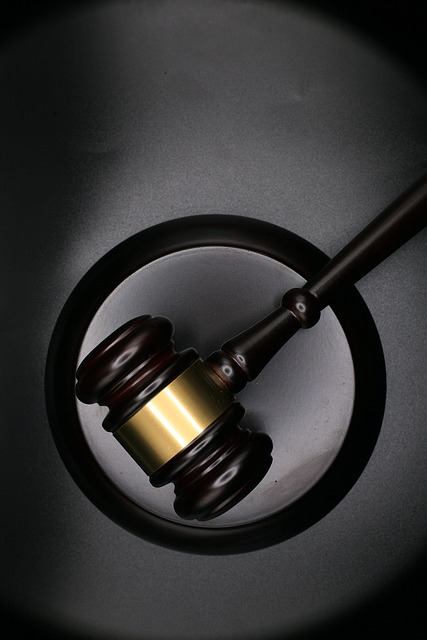Class action lawsuits empower consumers and affected groups to band together against powerful adversaries like large corporations, leveraging their collective strength for justice. These cases, initiated when harm from uniform misconduct or rights violations is widespread, aim for compensation and deterrence through injunctive relief. Filing a class action lawsuit involves a structured process: identifying the claim basis, organizing plaintiffs into a class, drafting and filing a complaint, and seeking court approval. This approach amplifies impact and potential recovery, making it ideal for victims of common defendants in white-collar or economic crimes. To file, gather evidence, consult with plaintiffs' attorneys who initiate the process by filing a complaint, ultimately aiming for a successful resolution via settlement or jury trial.
Discover the world of class action lawsuits and learn how they can be a powerful tool for individuals seeking collective justice. This comprehensive guide explores the ins and outs of litigation types, with a focus on understanding when and why these suits are filed. We’ll walk you through the process step-by-step, revealing the secrets to filing a successful class action lawsuit claim. From common types of litigation to real-world examples, this article is your go-to resource for navigating the legal landscape.
- Understanding Class Action Lawsuits: When and Why They're Filed
- The Process of Filing a Class Action Lawsuit: Step-by-Step Guide
- Common Types of Litigation: Exploring Different Class Actions
Understanding Class Action Lawsuits: When and Why They're Filed
Class action lawsuits are a powerful tool for consumers and groups affected by similar transactions or experiences against common adversaries, often large corporations or entities engaging in white-collar defense strategies. These legal actions are initiated when a significant number of individuals have suffered harm due to uniform misconduct or violations of their rights. By banding together, plaintiffs can leverage their collective strength to hold wrongdoers accountable and seek justice.
When considering how to file a class action lawsuit claim, it’s crucial to understand that these cases are typically filed when the potential benefits outweigh individual claims. The goal is not only to compensate affected parties but also to deter future misconduct by securing injunctive relief, ensuring a complete dismissal of all charges against the defendant. Historically, successful class action lawsuits have resulted in winning challenging defense verdicts, setting precedents that protect consumers and promote fairness on a larger scale.
The Process of Filing a Class Action Lawsuit: Step-by-Step Guide
Filing a class action lawsuit involves a structured process designed to represent and benefit a large group of individuals with similar claims against a common defendant. The first step, crucial for any successful legal initiative, is identifying the basis for your claim. This could be centered around consumer rights violations, employment disputes, or environmental concerns—issues that resonate across the country and within various philanthropic and political communities. Once this foundation is laid, potential plaintiffs must organize themselves into a cohesive group, forming what will become the class.
The process then progresses to drafting and filing a complaint with the court, clearly outlining the violations, damages incurred by each member of the class, and the desired relief. This legal document serves as the cornerstone of your case, presenting the general criminal defense strategy that will be employed. After submission, the court reviews the complaint, ensuring it meets the threshold requirements for initiating a class action lawsuit. This step-by-step approach allows for collective action, amplifying the impact and potential recovery for all involved parties.
Common Types of Litigation: Exploring Different Class Actions
Class action lawsuits are a powerful tool for individuals who have suffered similar injuries or losses due to common defendants. Unlike individual lawsuits, where each plaintiff pursues their claim separately, class actions pool these claims together, allowing for more significant damages and enhanced legal standing. This type of litigation is particularly effective in cases involving white-collar and economic crimes, where many people may have been affected by a single misconduct. By consolidating these claims, class actions ensure that all victims receive justice and compensation.
To file a class action lawsuit, the process begins with identifying a suitable case and gathering evidence to support the claim. This includes understanding the relevant laws and regulations, as well as documenting the extent of the harm suffered by the proposed class members. Once ready, the plaintiffs’ attorneys will file a complaint with the court, outlining the case and seeking approval to represent the class. Throughout all stages of the investigative and enforcement process, the goal is to build a strong case that can lead to a successful resolution, whether through settlement or jury trial.
Understanding class action lawsuits and navigating their legal process is a powerful tool for consumers and individuals seeking collective justice. This article has provided an overview of when and why these suits are filed, as well as a step-by-step guide to the filing process. By exploring various types of litigation, readers can familiarize themselves with different scenarios where class action lawsuits may arise, empowering them to take informed steps if considering a How to File Class Action Lawsuit Claim. These legal mechanisms play a crucial role in holding corporations accountable and ensuring consumer protection.






